Heat pumps come in various sizes. However, the biggest headache is finding the right size for your home. We have researched and come up with more information to help in your decision-making.
For a 2,500 square feet home (with a ceiling height of 10 feet, 4 residents, 3 exterior doors, and 12 windows), a heat pump of 40,400 BTU should be enough. To determine the correct heat pump size for your home, you may use the following:
- Manual J inspection
- Climate type
- SEER ratings
To work efficiently and at full capacity, you need the right size of heat pump for your home. Continue reading to explore more on the factors to consider, the amount of space required, and where to install a heat pump.
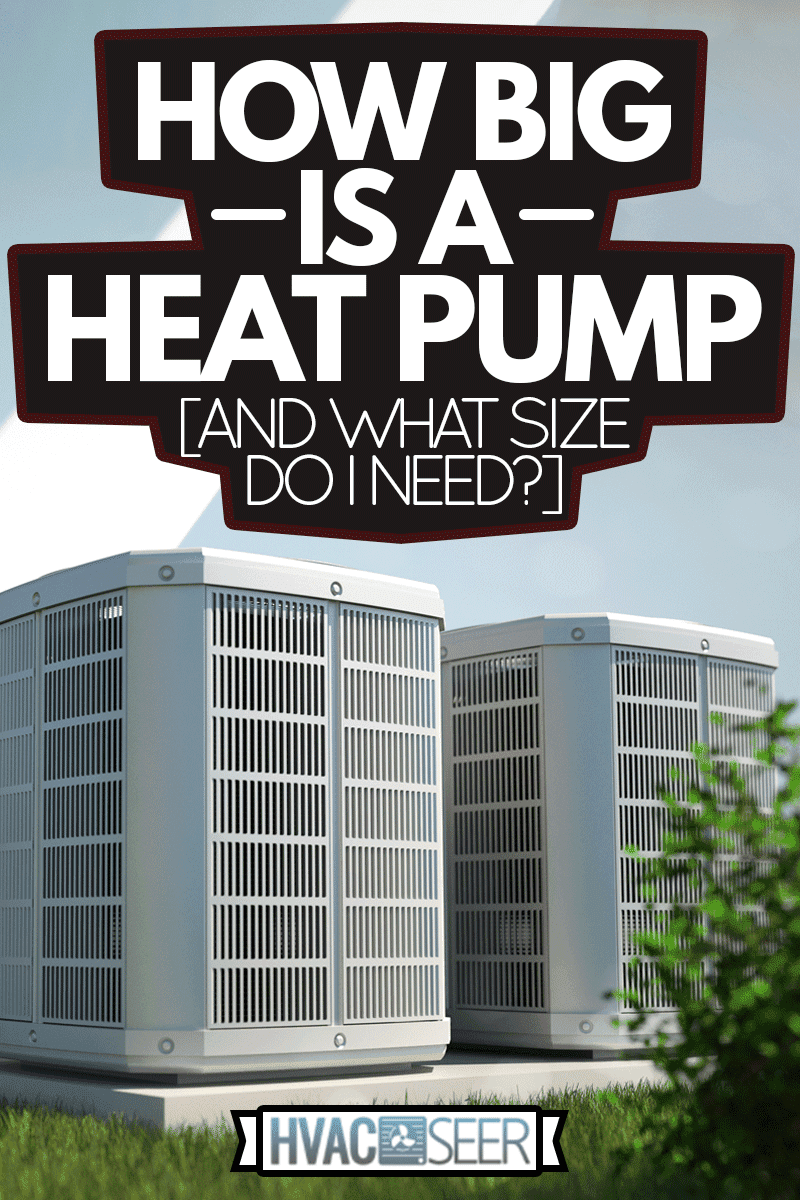
Factors To Consider When Sizing A Heat Pump For Your Home
The right size of heat pump matters a lot because if it is too small, it will dispense too much energy to heat or cool your home, which increases your utility bill. On the other hand, if it is too big, it will produce too much energy, thereby wasting resources.
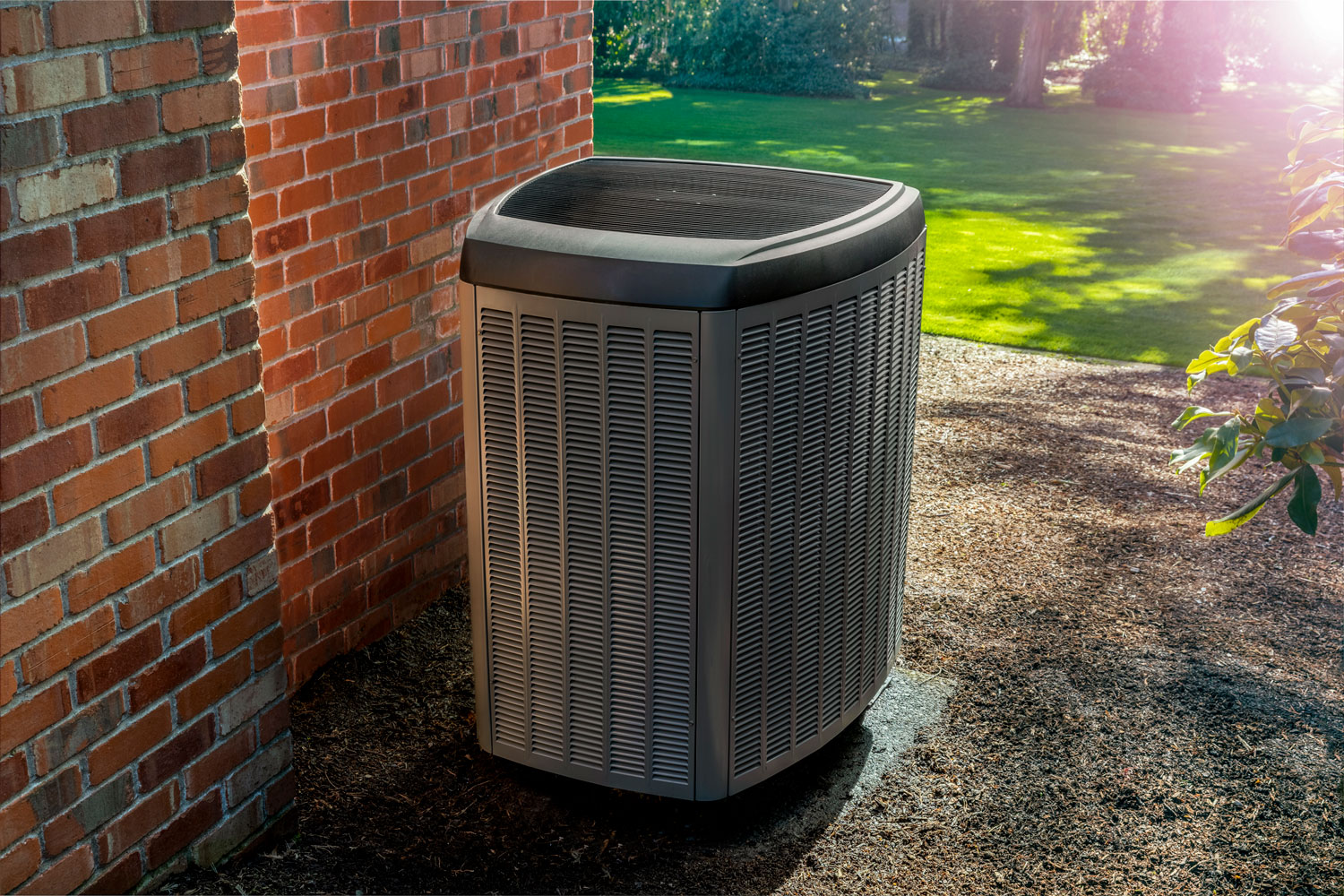
Other problems that may occur for having an incorrect pump size include:
- A drastic change in temperatures
- Increase in the on-and-off cycle
- Short cycles
- Uncontrollable indoor humility
To prevent these problems from happening, let us expound on each factor below:
Manual J Inspection
The HVAC industry follows a standard method of sizing heat pumps known as Manual J. Set up by the Air Conditioning Contractors of America, it involves calculations that are done to ascertain how much-conditioned air is needed in each room for both cooling and heating.
It considers 8 factors that will help you decide on the suitable heat pump size for your home:
- Climate and the number of days in a year where active cooling and heating is required
- Your home's layout such as its shape and square footage
- Location and number of windows
- The total air infiltration that occurs
- Insulation in the home
- Number of people living in a home
- Temperature preference of the occupants of a home
- Any extra appliances in the home that generate heat
Let us look at how professionals use the Manual J to calculate a heat pump size. The steps are as follows:
Find Out The Square Footage Of Your Home
This is done by multiplying the length and width of each room and then adding the footage squares of all the rooms to get the total square footage of your home.
Account For All Factors Affecting Insulation
You can get this by using the U.S. Standard Insulation. The key factors to consider include windows, exposure to the sun, and the air-tightness of your entire home. These factors account for are measured in BTUs.
- 100 additional BTUs equates to each resident in a home
- 1,000 additional BTUs equates to each window in a home
- 1,000 additional BTUs equates to each home's exterior door
Determine The Use Of Each Living Space
This is determined by the number of heating appliances being used in each room and the home in its entirety. Also, the number of people that frequently inhabit the space you are calculating should be established.
How do I calculate what size heat pump I need?
The estimation of the HVAC cooling load for a home that is 2,500 square feet, with a height of 10 feet, 3 exterior doors, occupied by 4 people and with 12 windows, is calculated as follows:
- 2,500 x 10 = 25,000 base BTU
- 3 (exterior doors) x 1,000 = 3,000
- 4 (residents) x 100 = 400
- 12 (windows) x 1,000 = 12,000
- 25,000 + 3,000 + 400 + 12,000 = 40,400 BTU
This means the HVAC load for this home is 40,400 BTU and will need a heat pump of 3.36 tons.
Climate Type
Despite heat pumps coming in a variety of sizes, they are not designed to operate in very cold areas. This is because they particularly use less energy when moving heat from one place to another.
They function best in moderate climates. If you live in extremely cold climates, below 10 to 25 degrees Fahrenheit, you may need to get a supplement heating system that should be used only when required because it is less efficient than the heat pump.
SEER Ratings
Good SEER or Seasonal Energy Efficiency Ratio ratings determine how efficient your heat pump is. It is a ratio that calculates the cooling effectiveness for ductless and air-source systems, and the result is divided by the energy used in watt-hours.
The higher the rating, the more efficient your pump can produce cold and warm air.
If you are looking for an efficient heat pump, a SEER rating of 15 or higher will suffice. Those that are star-rated usually show SEER ratings that fall between 18 to 27.5.
Therefore, if you live in a warm climate, get a unit that has a high SEER rating, but in cold climates, look for those that have a high HSPF rating, which measures the effectiveness of the air-source pumps in heating mode.
However, higher SEER ratings are costly, but in the long run, you save on your utility bill.
How Much Space Does A Heat Pump Need?
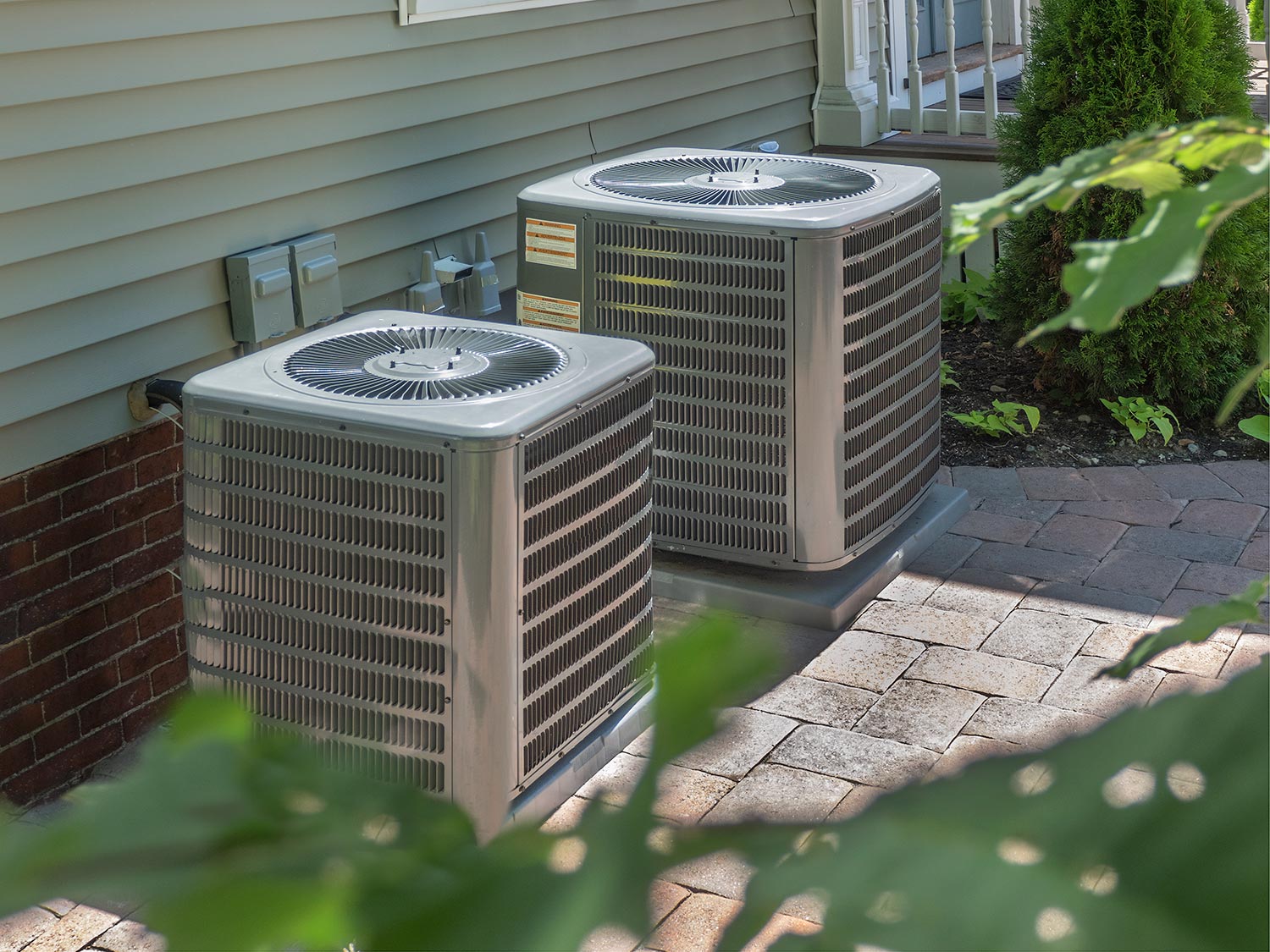
The space available outside your home will play a role in the type of heat pump you will install. An air-source heat pump will require very little space, whereas a ground-source heat pump will need a large portion in the yard.
Air-Source Heat Pump
This equipment is not bigger than a washing machine and can be placed anywhere in your compound that has enough flow of fresh air without obstructions.
Depending on the amount of heat you need to be produced, you can choose one that has a power output of between 5 and 13 kilowatts, because they cater well for most domestic households, provided they have the minimum required insulation.
Generally, 1 Kilowatt of heat can warm every 10 meters square of a house subject to heat and insulation loss.
Ground-Source Heat Pump
Ground-source systems are much more complex than air-source heat pumps. The groundwork for the pipes needs to be laid either vertically in boreholes or horizontally underground.
According to the Centre for Alternative Technology you will require roughly between 50 and 80 meters of pipe per kilowatt. If the ground is porous enough, the pipes are laid close to 1.2 meters under the ground.
And, since this will temporarily destroy your garden, you may have to remodel your garden at the same time you will be installing the pump.
Vertical installation of the pump will depend on where your home is located geographically. Also, the drilling costs can be quite high.
How Many Square Feet Does A 3-Ton Heat Pump Cover?
As seen above, the capacity of heat pumps is rated in British Thermal Unit (BTU), measuring 12,000 BTUs per ton.
A 2-ton heat pump will have a capacity of 24,000 BTUs of cooling and heating and is suitable for space that is not bigger than 1,000 square feet.
Therefore a 3-ton heat pump will be rated at 36,000 BTUs per hour. This means a 3-ton has a capacity to cool and heat than a 2-ton unit. A 3-ton can effectively cool or heat an area of 1,500 square feet but can be too big for a smaller space.
Where Should A Heat Pump Be Installed?
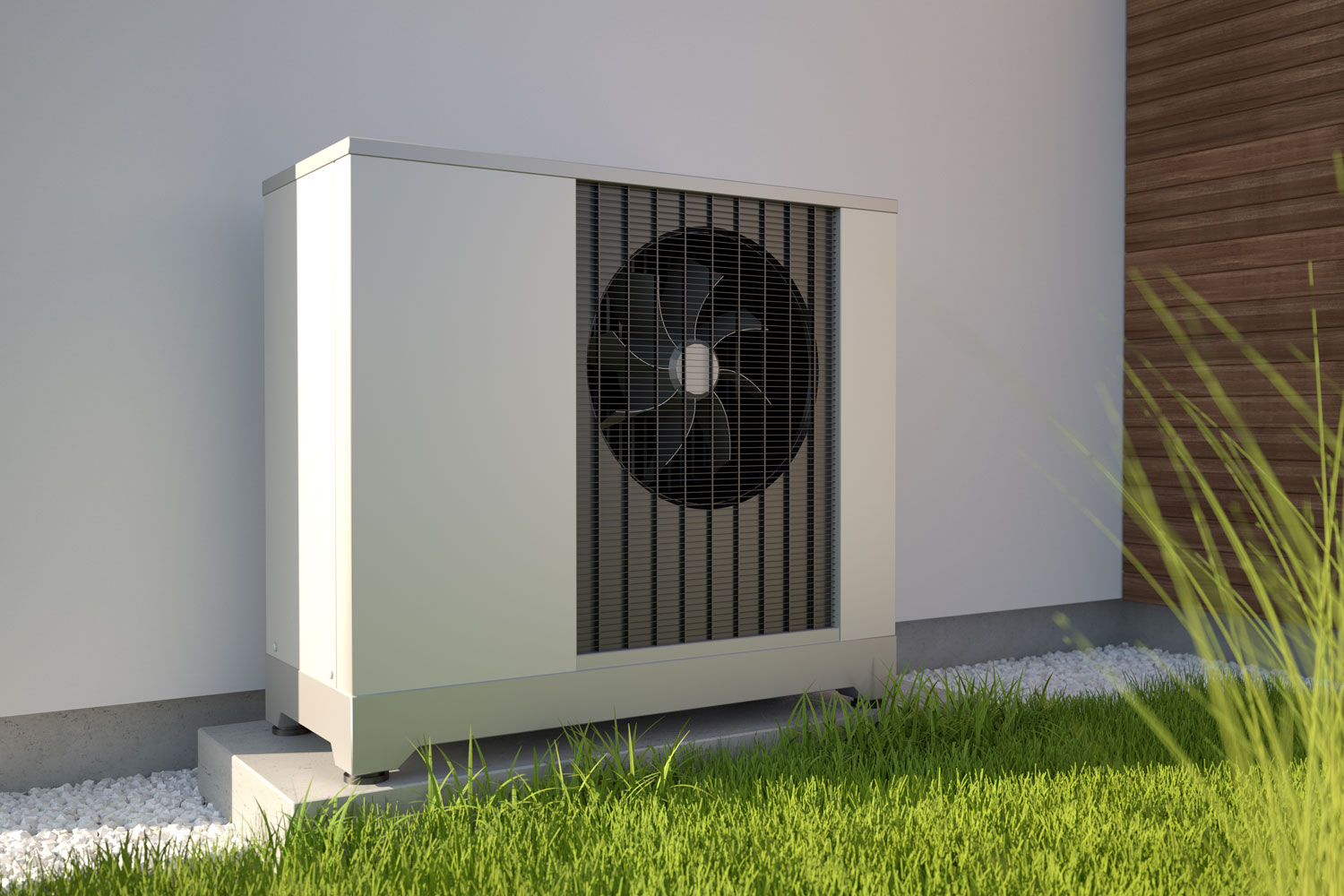
For your heat pump to function properly, it needs to be installed in a suitable location. The following are factors to consider:
Ventilation
A heat pump needs a lot of fresh air to warm or cool a home efficiently as they require abundant air to draw heat from. Therefore, it should be installed in an open space that has lots of fresh air.
Don’t install the units in closed spaces such as the attic or garage. It will eventually run out of air to pull heat from, causing it to heat or freeze these spaces.
In addition, there should be space between the unit and wall, normally a distance between 1 and 3 feet. It ought also to be elevated between 4 and 8 inches above the ground to drain properly and to prevent debris and snow from reaching it.
Accessibility
In relation to the above, a technician should be able to maneuver around the pump to easily reach it when repairs or maintenance are needed.
Surrounding Vegetation
Look out for vegetation growing near the pump, which should be at least 18 inches away. This is to prevent any obstruction to the unit, causing restriction to airflow. Always remove plants that start growing nearby.
In addition, avoid installing your unit near driveways or roads that can be quite dusty.
Weather
Keep away your unit from direct sunlight. This can cause it to work harder than it should, preventing adequate heating or cooling of your home.
Thus, protect the unit from sunlight by placing it under a shade and also in areas where the snowdrifts will not affect it.
Sea Salt Exposure
If you live near the sea, your pump will be more susceptible to corrosion caused by the salt from the sea. A ground-source heat pump would be more suitable in these areas.
However, this can be solved by coating it with an anti-corrosive agent that is applied to the coils during installation.
Home Occupants And Neighbors
Be mindful of the occupants in your home. For example, do not install a unit directly under a bedroom window as the sound from it can be quite disturbing.
To prevent disturbance to your neighbors, you can have a fence installed between your home and theirs to block out noises from the pump.
In Closing
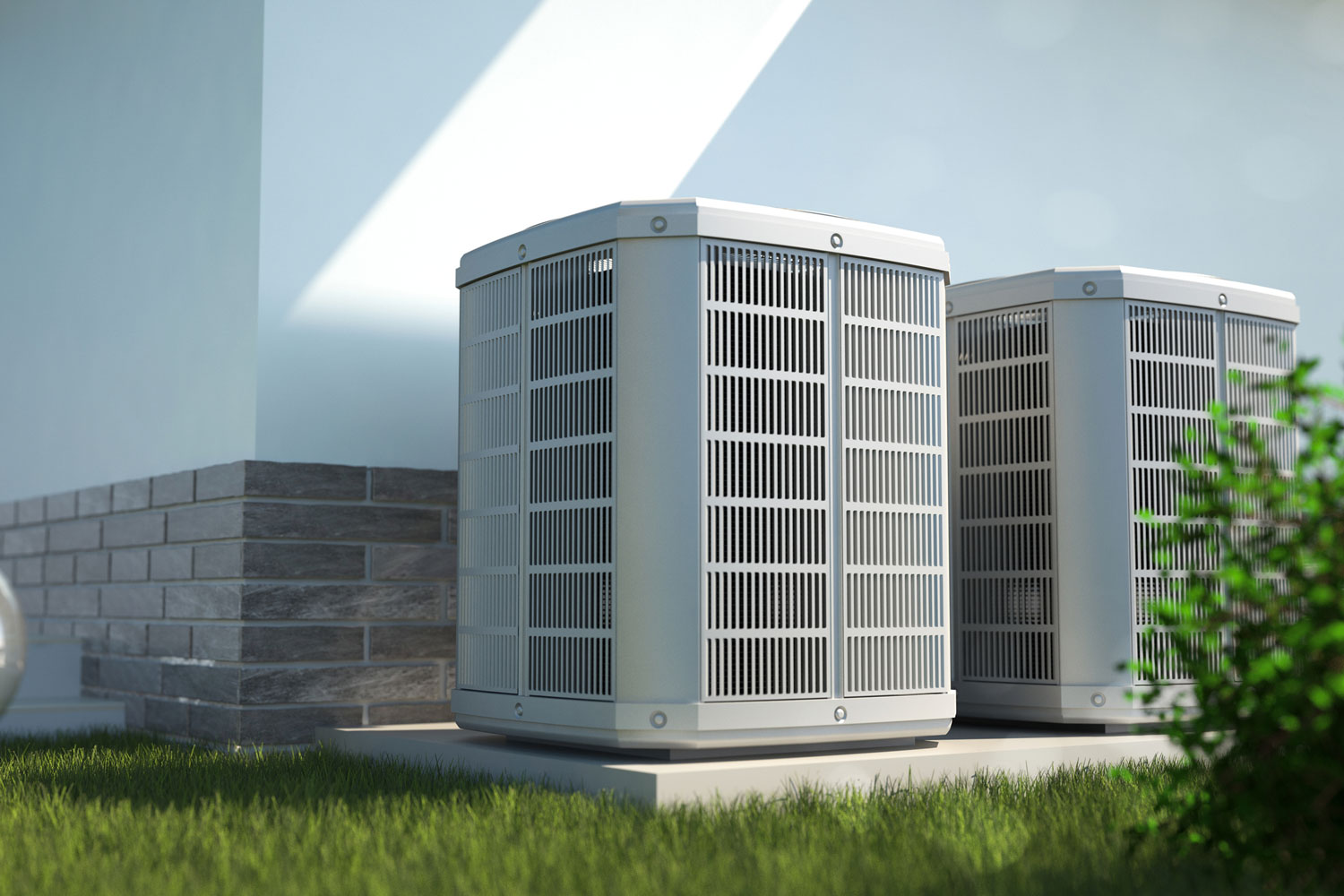
Sizing a heat pump correctly will determine how efficiently it heats or cools your home. This is decided upon by the climate in the area you live, the Manual J, and SEER ratings.
Also, before installations, ensure you have enough space for the type of pump you want to be fitted. There should not be any obstructions surrounding the unit to allow the free flow of air that helps it to function appropriately.
Have a look at our previous posts on Dyson fans and the correct room size for 8000 BTU:
